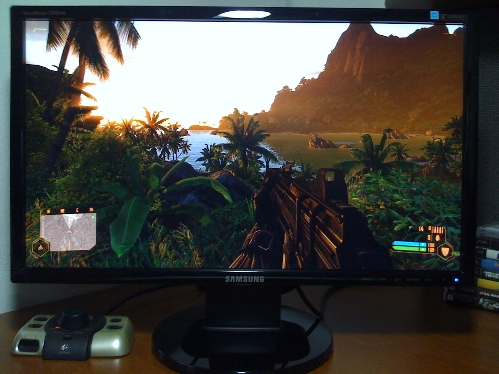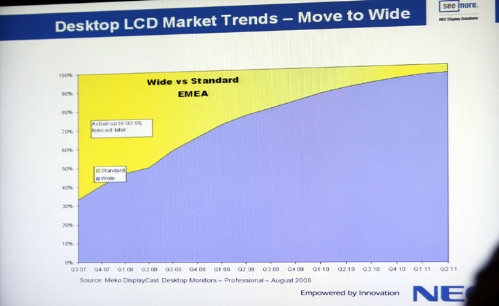According to DigiTimes, the 16:9 aspect ratio for desktop LCD monitors is going become the mainstream specification standard by the second half of this year. Somehow, we could predict this happening due to the more efficient manufacturing process of cutting screens to this ratio as well as seamless interoperability it would have with the home theater market.
The wider 16:9 aspect ratio is expected to surpass 16:10 as the mainstream specification, while the market share for larger panels, 20-inches and above, is expected to increase at the same time. Additionally, several market sources have noted that the overall global LCD monitor shipments are expected to drop five percent to around 172 million units.
Back in July 2008, Kuang-Lang Chen, vice president of TFT-business R&D center at Chunghwa Picture Tubes, pointed out that a 5G substrate can be cut into 15 units of 15.4-inch panels if cut into 16:10 panels, while the same substrate can produce 18 units if cut into 15.6-inch 16:9 panels. Moreover, there is not only a production efficiency benefit for LCD manufacturers, but also a smoother transition to be made from 16:10 to 16:9 as the wider aspect ratio is better suited for Full-HD theatrical content, widescreen gaming, comparative multitasking, and other related applications.
On another note, we have already embraced the acclaimed aspect ratio with the adoption of a 23” Samsung 2343BWX. This is one of many monitors releasing this year that run at a native resolution of 2,048x1,152 (the 16:9 version of 1,920x1,200) and are appropriately labeled WDXGA (Widescreen Dual-XGA) for the ability to fit two full pages of graphics and text simultaneously, while still leaving plenty of room for menus and toolbars.

Additionally, bit-tech reported last year that at the current rate of growth, LCD manufacturer NEC says that it expects more than 90 percent of all desktop LCD displays it ships to be widescreen by the end of 2010. However, the company doesn’t believe that 16:9 will necessarily overtake 16:10, but rather believes that “it is a matter of using the right tool for the job – in usage models where a 16:10 aspect ratio is desired, it’ll be used.” Displays with different aspect ratios will be continue to be used based on the most logical and appropriate usage scenario.


